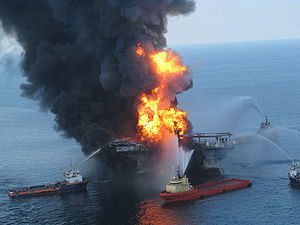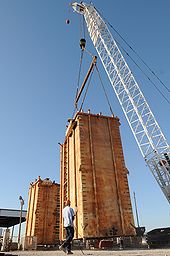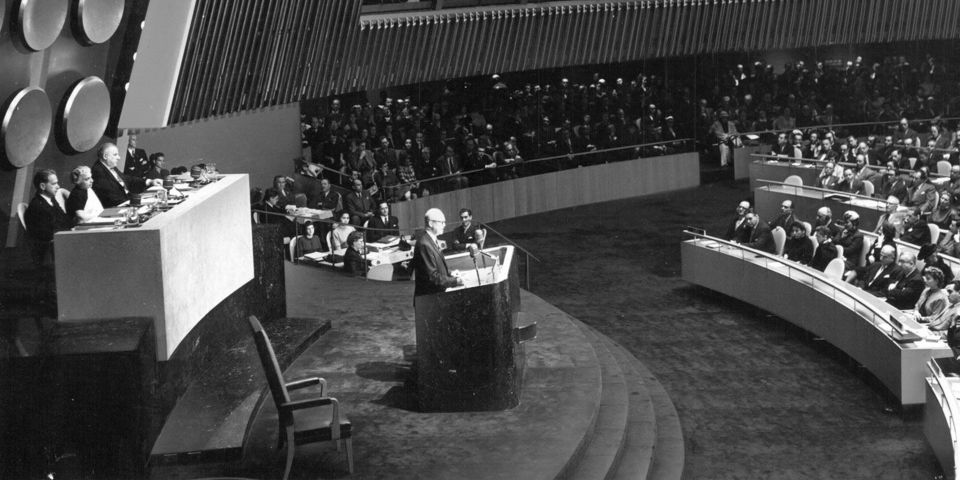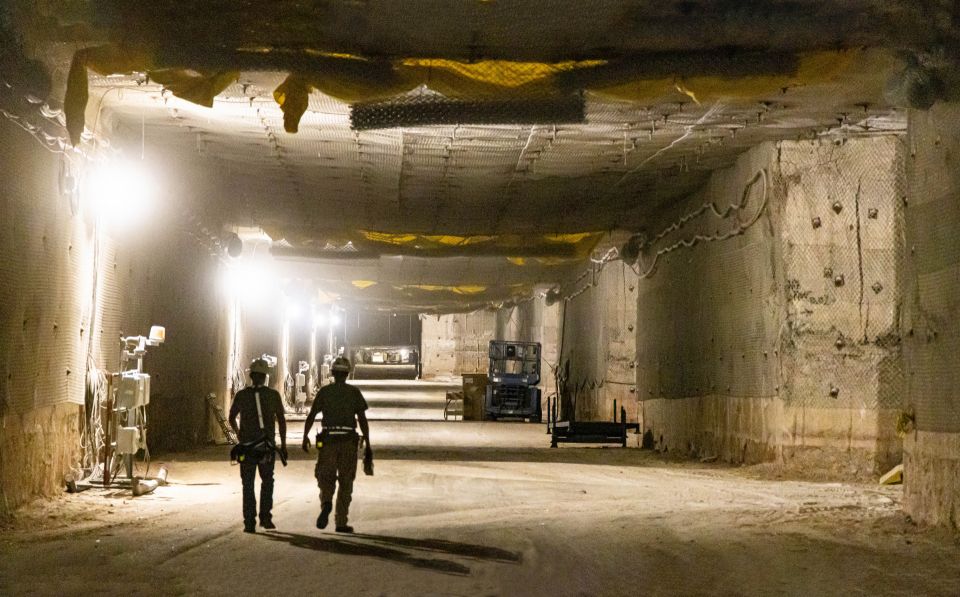The oil spill: Nuclear, take note
A few months ago, I had the honor of leading a class of future engineering leaders at Iowa State University. The dean, Dr. Jonathan Wickert, occasionally asks alums and others who have done interesting things with their engineering degrees to come in and lead the class in a case study. Events in the Gulf of Mexico that started in April 2010 with the Macondo oil spill provided an excellent opportunity to talk about crisis management and communications, with the added benefit of current technology relevance. This is an area that the nuclear industry also needs to study and understand.

The Deepwater Horizon offshore drilling unit on fire after the explosion
Some bounds: We ignored anything that happened BEFORE the Deepwater Horizon explosion. The fact that BP, the company that was drilling in the Gulf's Macondo oil field, may or may not have had adequate preventive measures is out of scope for this assessment.

An oil containment dome under construction
The class and I first looked at the actions of BP, separating its actions from the comments and media frenzy. The Wikipedia entry for the event forms a good, neutral review of the events. Once we got away from the natural bias the students had formed and looked at BP's actions, we saw a pretty good response to the crisis. BP had multiple teams working in parallel on a variety of solutions to cap the gushing well-some solutions were dubbed Top Hat, Top Kill, and Bottom Kill. Each effort was carefully attempted with due caution to ensure that it didn't make things worse. Each action that didn't work resulted in lessons learned. BP avoided extreme responses- "Nuke the well?"-and came up with temporary options to mitigate the impact as quickly as it could. In addition, BP engaged quickly in cleanup and mitigation actions for the oil that had already spilled.
So why did Tony Hayward lose his job?
We examined a number of news clips, commentaries, and some pretty funny riffs on BP's response. Just Google "BP" and "oil spill" and you will come up with more than enough reference material to fill the space. The fundamentals we came up with were:

Hayward
- The fact that Tony Hayward, who is now the former chief executive officer of BP, was not an American, but was born in the United Kingdom. We Americans have a love/hate relationship with the British, and his accent constantly reminded us of that. In fact, the chairman of BP, a Swede named Carl-Henric Svanberg, later made some similar faux pas when he talked about "small people." Hayward didn't fully appreciate some of the nuances of American culture, and he made several remarks that did not play well in the United States.
- "I want my life back too," said Hayward. This was an attempt to show empathy with the people who were affected, but delivered in a British accent with the knowledge that he probably wouldn't go bankrupt or lose his livelihood did not play well.
- BP attempted to downplay the significance of the spill before it had a grip on the real magnitude and a real plan to cap the flow and mitigate the effects. By significantly underestimating the flow rate and overestimating the company's ability to cap the flow, BP undermined its own credibility and contributed to the sentiment that the company didn't care and wasn't doing enough.
- BP was not prepared for 24/7 media coverage, nor did it understand the ubiquitous nature of the Internet. When Hayward took a weekend off to be with his family, he went yachting off the coast of England. Someone snapped his photo and it was splashed across United States. The same weekend, in the midst of an environmental crisis, President Obama played golf with some friends. No pictures and no bad press ensued there.
- BP was slow to understand the power of social media. A phony BP Twitter account was online far too long without a response from BP, nor did the company manage the ensuing parodies and other easily managed pot-shots. When finally the new chief executive officer, Bob Dudley, stepped up and talked about how much some of the parodies hurt the employees of BP, who had finally been in the media and were made human, much of the negative press was halted.
The list of things one can learn from the event in terms of crisis response and communication can go on and on. What did you (or your company) learn from the event? What can the nuclear industry learn?

Harding
Margaret Harding has almost 30 years of experience in the nuclear industry in technical design, licensing, and quality issues. She worked for GE-Hitachi for 27 years with positions of increasing responsibility, leading to vice president of Engineering Quality. Two years ago, she left GE-Hitachi to start her own consulting business to help companies with business ventures in the nuclear industry. She is a guest contributor to the ANS Nuclear Cafe.



